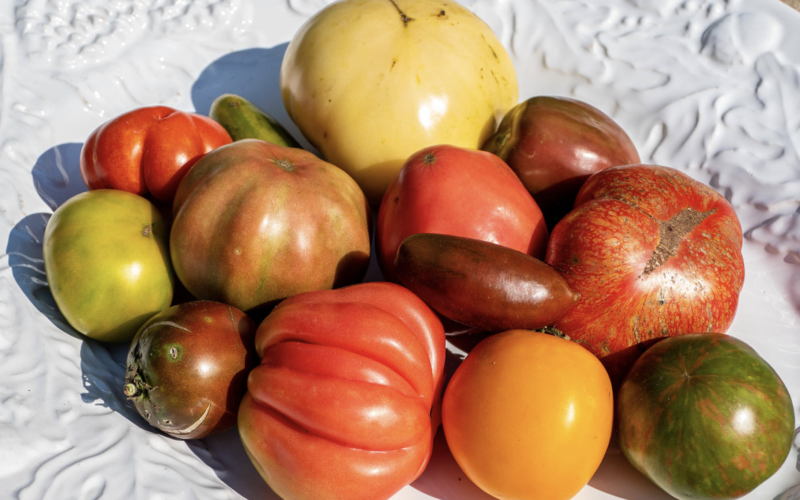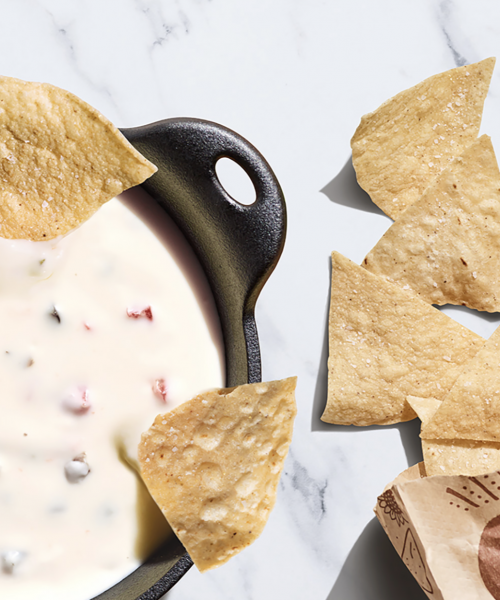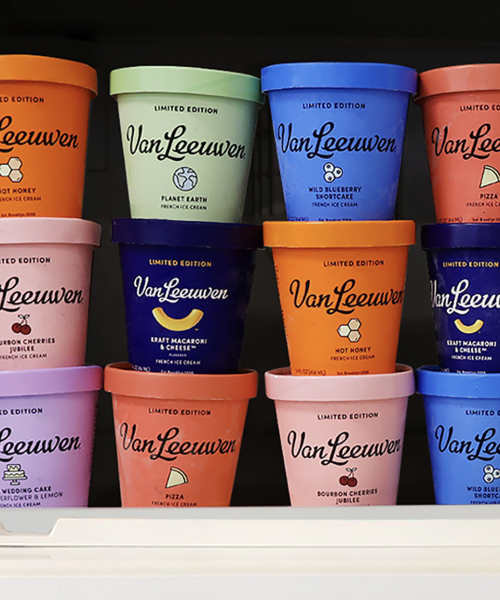By Jason Tesauro | FoodAndWine.Com
Troy Warren for CNT
Hanover County is a tomato-growing paradise cherished by chefs, farmers, and even soil experts.
Chef Patrick O’Connell gazed lovingly upon a flat of Hanover heirlooms at The Inn at Little Washington, his iconic three-Michelin-star restaurant. The James Beard Foundation Lifetime Achievement Award winner summoned his executive sous chef and farmer-in-residence to admire the bounty.
“Something ordinary, looked at differently,” he said. “We want our staff to get the best of the best of the best.” O’Connell recalled an intense tomato purée he once ferried home from Italy. “Perhaps in Naples, there’s something comparable.”
The most delicious tomatoes in the country are grown on a spit of sandy loam in Virginia. Fight me. Actually, don’t fight me—fight the chefs, eaters, soil experts, and farmers for whom this isn’t just local-pride opinion, but established fact.
Bordered by three rivers in eastern-central Virginia, Hanover County is a long, narrow stripe that straddles the Atlantic Seaboard Fall Line, a geological boundary that separates soft sediments of the Coastal Plain from solid bedrock of the mountainous Piedmont. Drive I-95 from New Jersey to Georgia and you’re essentially riding this line.
West of I-95, red clay and Blue Ridge Mountains give rise to Virginia wine country, where there’s too much water for tomatoes, but the perfect amount for grapes. East of I-95, the topography flattens out, warms, and turns sandier, making it ideal for crops. But something magical happens in Hanover, where Coastal Plain and Piedmont Plateau join for hot days and cool nights. “Best general farming soil of the Coastal Plain uplands,” reads Soil Survey of Hanover County, 1905. “Tomato plants make a rapid growth … heavy fruitage of large tomatoes of excellent quality.”
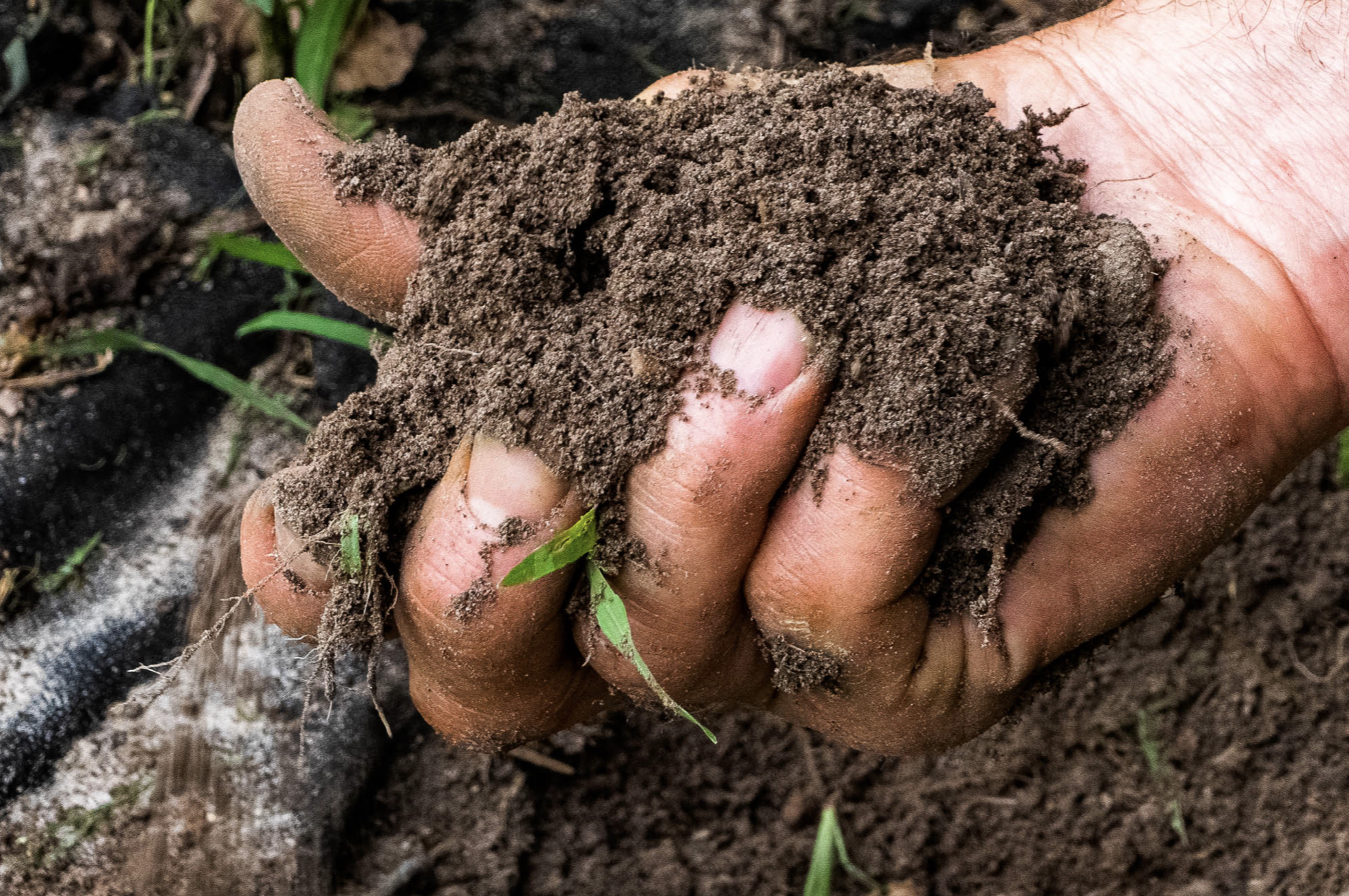
Tomatoes grow wild in the Amazon and are found in the Andes from Chile to Colombia. Spanish conquistadors brought tomatoes to Europe in the 16th century. By the late 18th century, they were Italian mainstays. The first reference to Hanover tomatoes appeared in The Richmond Times-Dispatch, in 1878: “Some fine sweet-potatoes, the first of the season … were displayed yesterday. There were not as great a curiosity as the Hanover Trophy tomatoes.”
Other states grow exponentially more tomatoes, including some notable heritage varieties, but most of them are modern commercial hybrids grown from patented seeds lab-engineered by the agriculture industry for uniformity, disease resistance, mass harvest, and shelf-life—flavor be damned. Heirlooms, by contrast, are publicly available, self-pollinating, pure-bred varieties that have been conserved and shared by seed-savers since at least 1951 (when hybrids were first introduced), and many have traceable lineages going back centuries. Colorful as Skittles, heirlooms range from a pea-sized Blondkopfchen (“little blonde girl”) to the two-pound-plus Ukrainian Zimarevsky Giant. They’re sometimes cat-faced (cracked and dimpled), critter-bitten, and ugly, but they’re always tasty. And in one corner of Virginia, Big Agriculture and commercial tomato-tech are no match for old-fashioned heirlooms.
Hanover earned its reputation as tomato-friendly terroir by affording farmers an earlier, more consistent crop, regardless of variety. The Hanover tomato is now a cult classic. There’s even a Hanover Tomato Festival with an appointed tomato queen.
“Hanover County is ideal,” said Mark Reiter, Ph.D., Professor of Soils & Nutrient Management at Virginia Tech. “There’s more organic matter in the soil, more sulphur available. There’s enough water retention, but not too much.” Add in the county’s lower-pH soil and natural slope, and it’s prime tomato real estate.
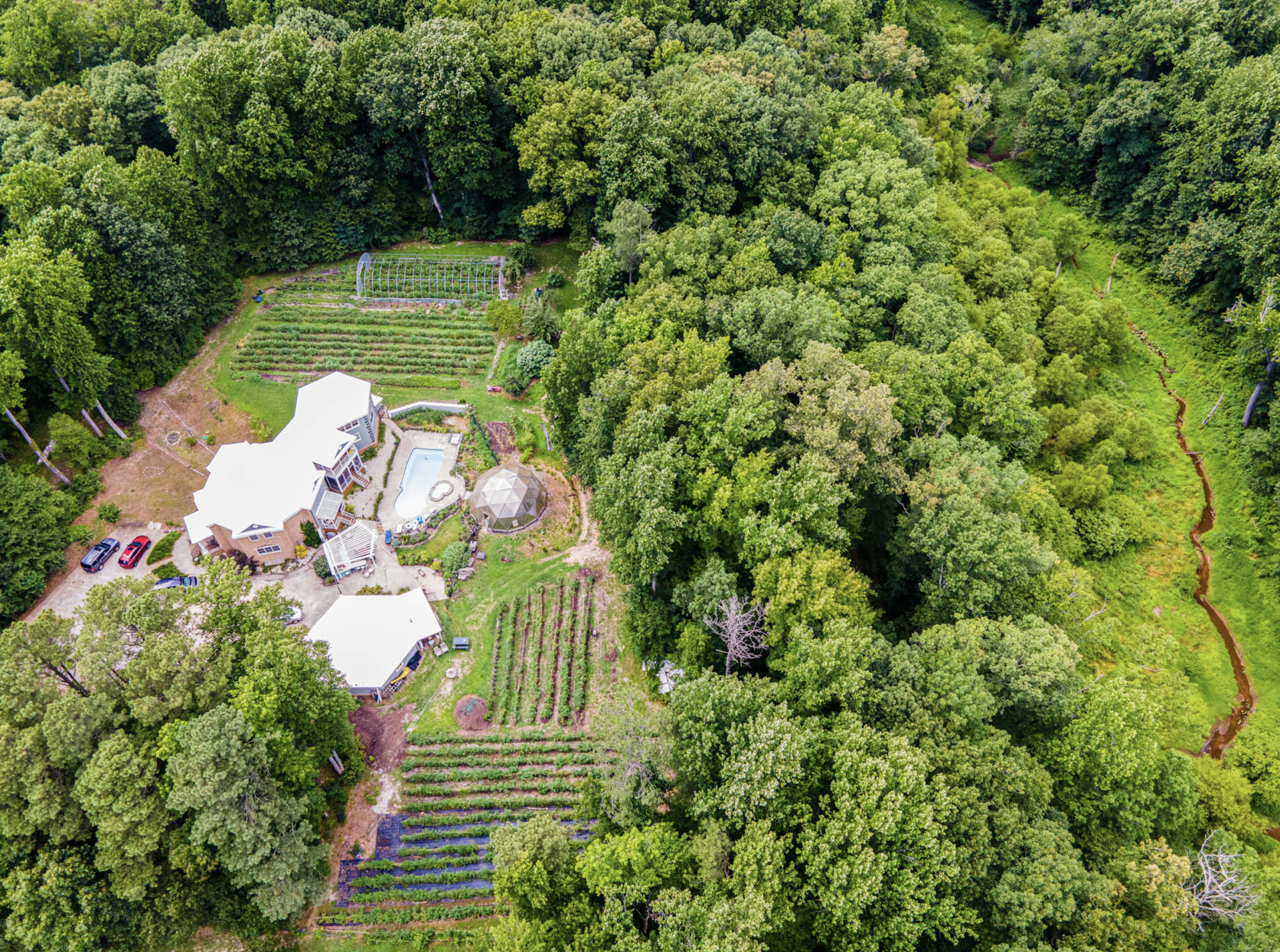
Village Garden RVA sits on a verdant, slightly convex plot just east of the Interstate. Poised inside a protective copse of trees at the nexus of two tomato-nurturing soil types, the farm is only one small acre. But the divine somewhereness of this acre makes all the difference. In late April, the last big frost hit Hanover. On one end of the street, a family lost their entire tomato crop. At the other end, 900 feet away, not a single Village Garden plant suffered.
“The farm is on top of a hill; it’s going to drain [water and cold air] well,” explained Joe Morina, Ph.D. Candidate in Microbiology at VCU. “And it’s a mix of sand and clay. Nutrients plus some water storage potential with the clay, and then lots of sand, which heats up faster, all surrounded by healthy forest feeding the microbiome.”
Factory-farming monoculture is impossible here. In lieu of high production, farm and life partners David Hunsaker and Barbara Hollingsworth plant for quality and diversity. They founded Village Garden in 2011 and cultivate over 200 varieties, specializing in old forgotten gems (Macado, named after the opera), wild color variants (Ei von Phuket, a pink Easter egg tomato), and Oxhearts—”my favorite of all,” said Hunsaker. “The filet mignon of tomatoes.”
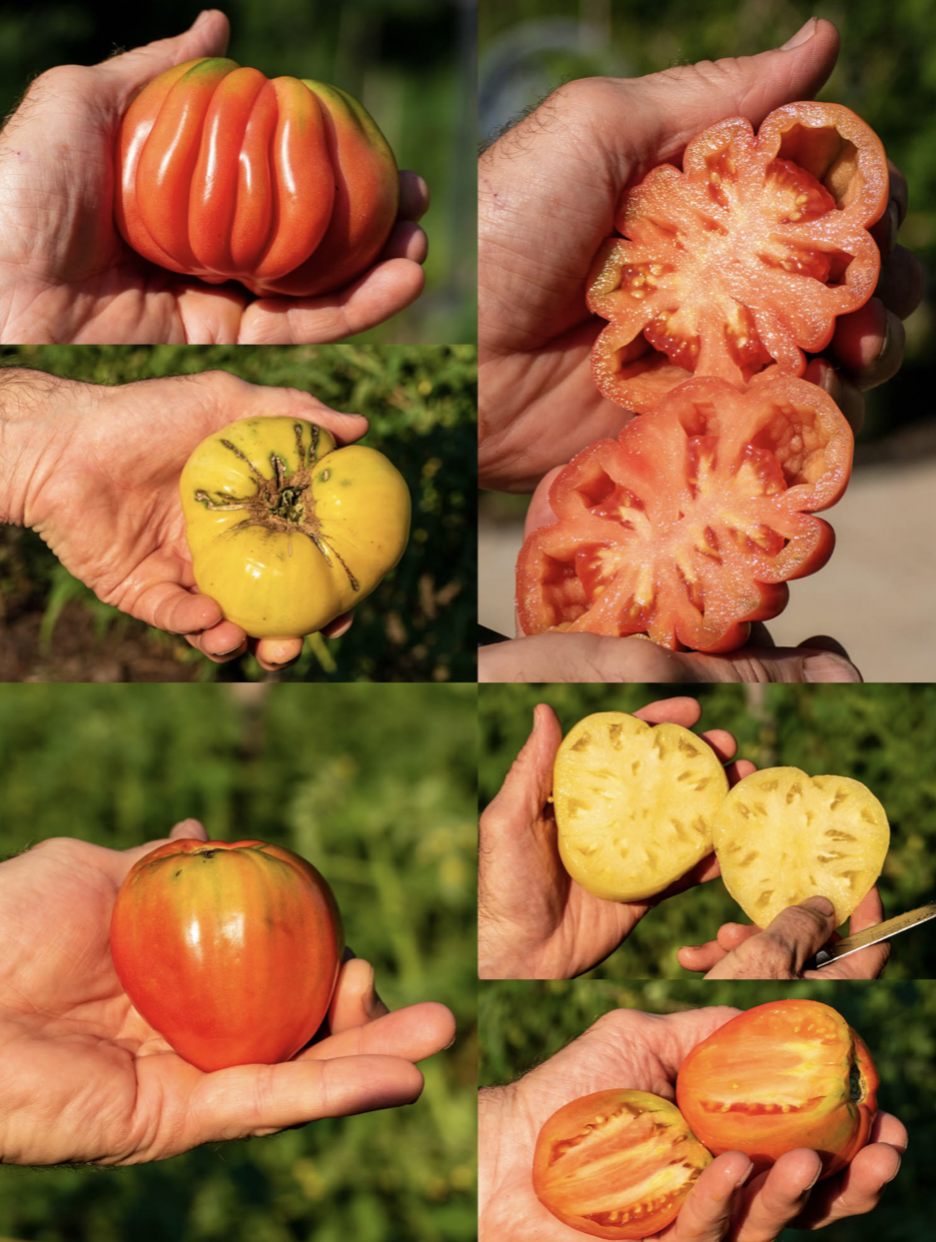
To honor Village Garden’s tenth season, Hunsaker and Hollingsworth are collaborating with top regional chefs on a series of ten tomato dinners paired with Virginia’s most honored winery. Barboursville Vineyards, owned and run by Italians who know a thing or two about tomatoes, will showcase Vermentino, Barbera, and a Nebbiolo-based rosé. The series, called SUPPER | SUMMER | SOMM, kicked-off last month and spans that peak stretch when VA ‘maters matter the most.
“They’re just so stunning and delicious,” said chef Brittanny Anderson, a two-time James Beard Award semi-finalist, Top Chef contestant, and owner of Metzger Bar & Butchery and Brenner Pass. “We’ve been using Village Garden for years. At first, it was all word-of-mouth to get them.”
Whereas commercial tomatoes are harvested unripe, then gassed and shipped away, Village Garden heirlooms are picked at prime ripeness and delivered straight to restaurants or markets in flats of slicers and pints of cherries. “Little red ribbed ones, just straight meat, no seeds. Stripey ones with pink, yellow, and orange,” said Anderson. “The variety is mind-blowing.” Her 7/14 tomato dinner menu is bookended by tomato sorbet and tomato upside-down cake.
“It started on Saturdays after we finished the famers’ market. We’d pull up to a restaurant’s back door, unannounced, with every color and shape of tomato that no one else considered worth their time to grow,” said Hollingsworth.
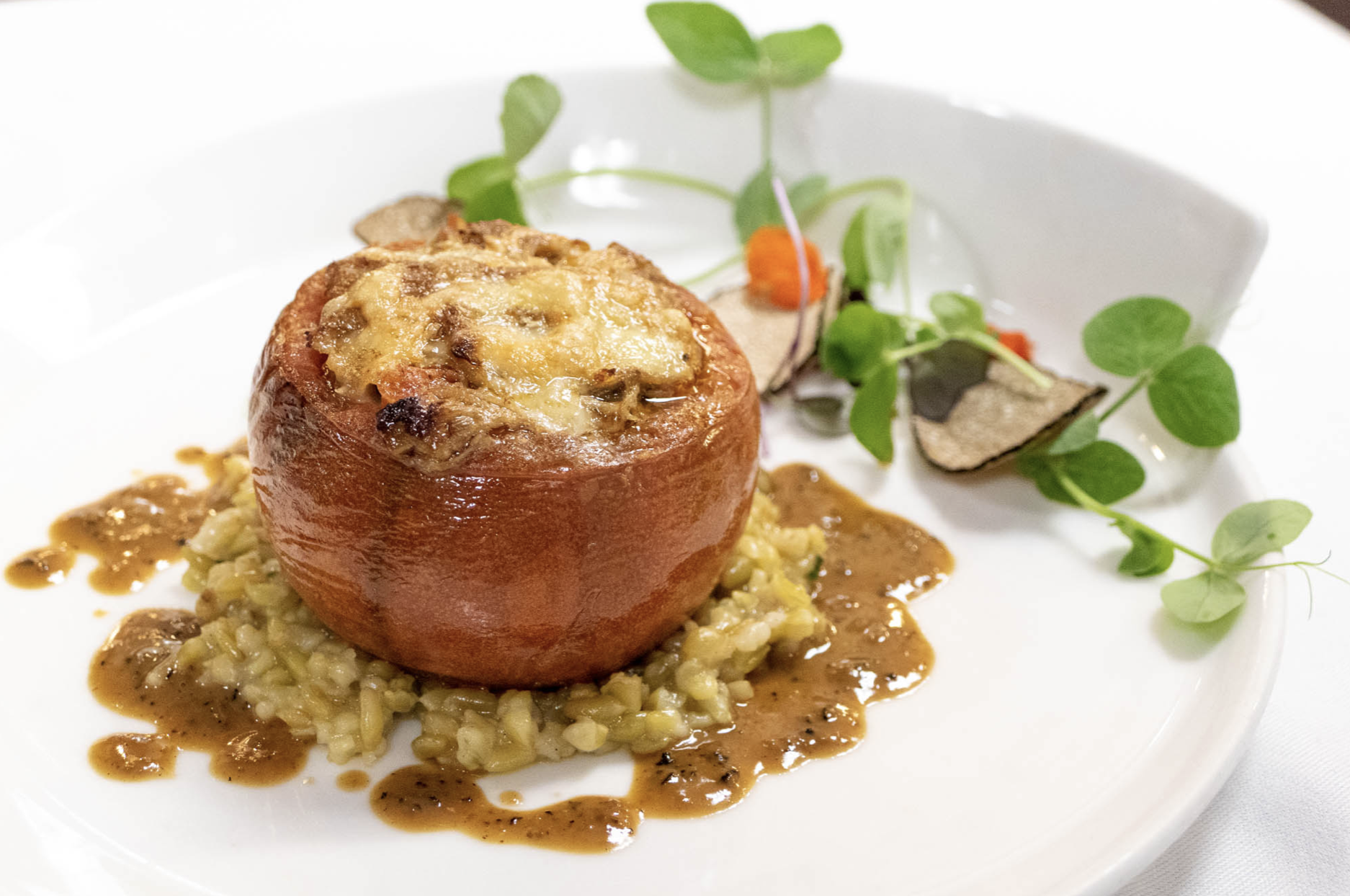
“This has nothing to do with commerce,” added Hunsaker. “It’s about nature, life, humanity, cooking, the relationships we have with chefs, and the love affair we all have with tomatoes.”
Maybe you’ve devoured other standout tomatoes, but you’ve never had better. It’s not luck, it’s not fertilizer, it’s not marketing. It’s alchemy. Village Garden pours love (but no chemicals) into the ground, so we might sup gorgeous fruit from it.
SUPPER | SUMMER | SOMM (remaining dates)
Wednesday, July 14 – Metzger Bar & Butchery
Wednesday, July 14 – Midlothian Chef’s Kitchen
Sunday, July 18 – Alewife
Wednesday, July 21 – Lillie Pearl
Friday, July 23 – Palladio Restaurant at Barboursville Vineyards
Monday, July 26 – Saison
Wednesday, August 4 – The Pink Grouse & The Lobby Bar at Quirk Hotel Charlottesville
Monday, August 9 – Grand Finale at Village Garden RVA
Please contact individual restaurants for reservations.
In Other NEWS


























